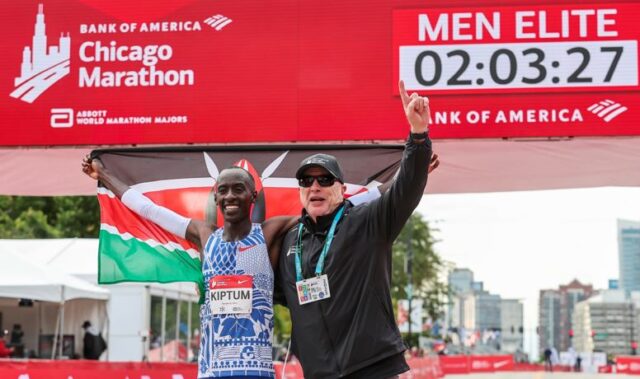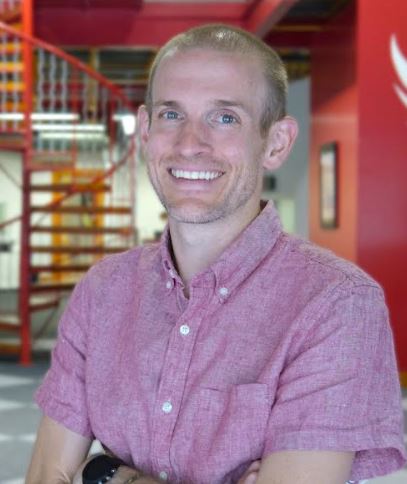Insights from the 2023 Cancellation of the Medtronic Twin Cities Marathon
Thousands of runners were ready to convene at the starting line of the Medtronic Twin Cities Marathon on Sunday, October 1, 2023. But what was supposed to be a day of triumph, endurance, and personal records turned into an unexpected turn of events as Black Flag weather conditions led to the race being canceled hours before it was set to begin.
The cancellation was a big news story in Minneapolis – as well as in the running community nationally - and left many participants, who were trained and ready to race, disappointed. Yet, out of the chaos emerged a wealth of insights and lessons that are being shared throughout the running industry. Critical takeaways on preparedness, communication, and more are beneficial to events of all sizes.
After presenting an in-depth case study on the cancellation experience at the 2024 Running USA Industry Conference in Orlando (view the presentation document here), the Twin Cities in Motion team, which produces the marathon, was generous enough to recap some of their top-level lessons for our Running USA readers. Here are their thoughts. Thanks to Eli Asch, Charlie Mahler and Jessie Sand for their efforts on this summary:
Q: What changes have you made to your pre-event process for this year’s marathon based on last year’s cancellation?
TCM Communications Team: In hindsight, I think most of us would say we should have been a little more prepared for the “cancel” option than we were. Our focus throughout the week was making sure the race could be run safely in what we expected to be really difficult conditions. Our messaging and planning were focused, naturally enough, on raising awareness of the dangers and outlining what we were doing to make things safer and what participants needed to do to protect themselves. We knew all along cancellation could be in the cards and it’s not like we got caught by surprise, but we spent most of our limited time, human resources, and bandwidth on the “go” situation and making it safe. Speaking for the comms side, we probably should have put a bit more attention at the start of the week into potential cancellation messaging and post-cancellation talking points/media strategy, so we weren’t scrambling as much as we were in the wee hours of Sunday morning.
TCM Operations Team: A lot of what we did really affirmed our preparedness plan—we had a planned cadence of pre-race Interagency Team and Crisis Comms meetings that got most of the right people in the room when they needed to be in the room to make decisions and review plans and comms, and we utilized that well. Out of those processes we were able to establish and then reaffirm our EAS flag status and thresholds, confirm additional medical resources, and mostly—although admittedly not always perfectly, as perfect is a high bar under any circumstances, let alone challenging ones—keep people informed. As related to our medical operations, there are a couple things we had planned for the extreme conditions that we didn't get to execute on—like establishing with each Aid Station Medical Team that they were able to be reimbursed up to a certain dollar amount for any additional ice or heat-related supplies they bought during the day, rather than having a single re-supply team running ice all over the course—that we've established as "keepers" for future years. The biggest takeaway for us is that we have had a long-established "Rules & Games" Committee time of 5:00am on race morning. That was planned more for "acute" incidents (like lightning, or a late-breaking course-altering event), but for a known risk like heat, we would move that meeting up in future years to make any early morning call a little earlier. This past year, we told runners that they would hear from us with a final update at 5:30am (with our 10 mile starting at 7:00am) and we hit that timeline, but in future years, if we have a planned final race morning review it will be moved up some amount of time (likely to 4:00am) so that we can communicate to runners some amount earlier (ideally before 4:30am).
Smaller things include making sure certain smaller internal groups have tighter comms plans through pre-opened group texts or other tools to make comms as close to synchronous as possible.
Q: Have you made any adjustments to your marketing or communications strategy to address runner concerns or fears?
TCM Communications Team: We addressed these concerns to the best of our ability after the event, and we feel we did so extensively--on podcasts, interviews with NPR/MPR, the Wall Street Journal, the Star-Tribune, and directly to our runners. We made our runners whole through a refund mainly funded by our cancellation insurance and were able to offer them a special window to register early for next year. Now it's about moving forward—yes, with preparedness plans in place for the future and a readiness (including talking points) to address concerns if they arise again in the future. If a participant wants assurances that we won’t have to cancel again, that’s an unrealistic expectation. While there are small and specific things that we would do differently in future years, we would cancel again under the same circumstances. We have a responsibility for the safety of participants, volunteers, and the viability of community safety resources.
Q: Have you added any external support resources for weather-related issues to this year’s marathon ramp up process?
TCM Operations Team: We already had such strong support from our National Weather Service- Twin Cities Office and Hennepin County Meteorologist in real-time, 24 hours a day. Additionally, they have connected us to our Minnesota Department of Natural Resources Climatologists, who are conducting a long-term climate trends study for us that could be a factor in future decisions like a potential date change. We are working on a partnership with several other major US marathons to share resources like WBGT thermometers on race day, and are also looking into a dedicated contract resource that would be able to support race week coordination solely of our partner permitting and safety agencies under any conditions (from perfect to challenging), to assure that they remain informed at all times and are able to support any type of incident that arises. We also ID'd that one of the gaps in our comms plan was that we didn't have a trusted and tested mass text tool to inform most people where they go first for info—their smartphone—and our Marketing & Comms team is leading efforts to assure that we have one that we have tested and that can appropriately segment messaging to both internal and external groups by this upcoming year's marathon weekend.
Q: Small events (3,000 runners and under) are a very large part of our Running USA network. Are there any tips/suggestions that the TCM team can provide that would help small events plan and prepare for inevitable weather-related issues?
TCM Communications Team: I think tabletop exercises among staff and key volunteers are incredibly helpful, both for surfacing and examining varied weather and other crisis situations, but also for seeing how different members of the team will interact on such matters. If there’s a regular meeting where key players are in attendance, adding 15 minutes to discuss a scenario is good to build the team’s “crisis muscles.” In addition to that, I’d say don’t be shy about reaching out to larger organizations for insights, messaging templates and wisdom from experiences they may have had. And, going into an event, scheduling meeting times throughout race week for members of the crisis team to meet. The meetings may not be needed in the end, but it’s easier to cancel meetings on race week than wedge them into an already packed and chaotic schedule if a crisis comes up.
TCM Operations Team: First, adopt EAS flags as a communication tool. It's the clear, industry-standard way of communicating safety information of all kinds about your event. If you have any doubts, consult with a medical professional—hopefully your Medical Director—about what level is appropriate in advance of your event. Also, it will vary market to market, but your city, county or state may have resources that you're not even aware of that would be able to help you in a crisis—National Weather Service, Office of Emergency Management, college or university meteorology programs, etc. Establishing relationships with those groups before you're in crisis goes a long way to establish trust and credibility that is greatly needed when and if you do have a crisis and need their support. Having a pre-planned check-in with them 5-14 days in advance of the race—we have what we call the "Interagency Public Safety Race Week Kick-off Meeting" over coffee and a light breakfast from 9-10am Monday morning of race week—is helpful to both keep them informed and get any updates from them that you might need to have. Additionally, having pre-planned communications written in advance—that may just need a few, final "Mad Libs"-style detail additions—and email lists to all relevant groups--participants, day-of volunteers, your committee, sponsors, vendors, staff, and Board—pre-loaded into your email tool will save precious time in a crisis.
Q: Anything else you would like to add that fellow events can learn from?
TCM Operations Team: Don't try to predict the unpredictable. With the chance of impending bad weather—and especially potentially event-altering or -cancelling-ly bad—everyone is going to be asking you questions that you can't know the answer to: "Will you cancel?" "What will the weather be?" "What will happen if you do cancel—will we get a refund?" In those moments, you have to be empathetic, but you can't promise anything you aren't 100% certain you will deliver on. The key things to let folks know are your current status—this is where the EAS flag will come in handy—and when they will receive their next update from you. After an event cancellation, you are never going to make everyone happy—one of the things that's so great about running is how deeply invested our participants are. But do what you can to put participants first in ways both big and small that you can systematically support—mail medals, or if you can't mail them have runners come and pick them up. If people didn't get to go to your beer garden, see if your brewery partner will host an event at a local bar. And keep people —including your participants, but also your other key stakeholders—updated about what your plans are, or—if you don't know what those plans are yet—when they should expect to hear from you next.
It's a hard process, but if you're empathetic, put your runners first, and don't overcommit yourself to things you can't deliver on, you will get through it and be able to come back strong—admittedly maybe with some battle scars—in future years.
TCM Communications Team: Be prepared for the effort needed during the post-cancellation days and weeks. Cancellations have a longer “tail” than completed events with unexpected challenges like checked gear, medal distribution, credit finalization, overflowing warehouse, etc. Be mentally ready for the final chapters of the crisis. It wasn’t until nearly a month after the race, once our insurance situation was finalized, that the 2023 cancellation felt “mostly over” for us.





